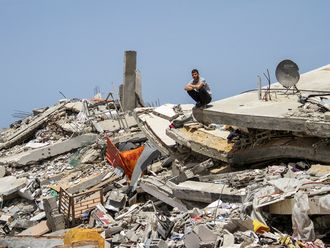Optimists are in the ascendant in India, where Prime Minister Narendra Modi’s reform efforts have spurred predictions of 7.5 per cent growth this year — higher even than China. By contrast, the country’s most eminent agricultural economist recently warned that growth in the farming sector was likely to flatline. That may not cripple the larger economy, since agriculture now accounts for only 15 per cent of India’s GDP. But it’s catastrophic for the one in two Indians who depend on farming for a living.
Clearly, Modi’s initiatives have had no direct impact on India’s long-suffering farmers. One could argue that past efforts to improve their lot have turned out to be little more than boondoggles, where most of the gains end up in the pockets of unscrupulous middlemen. And it’s true that the government’s main focus should be to encourage a manufacturing industry that can draw the huge surplus of unproductive workers off the land and into towns and cities.
Still, Modi can hardly afford to look on idly as half the population suffers. Unseasonal rains in much of northern India last month have heavily damaged crops. There have been several reports of farmer suicides. In the 21st century, Indian peasants remain far too vulnerable to the whims of the weather: Too much rain is as disastrous as too little, or as a badly distributed monsoon. The last 12 months have witnessed all three.
One simple way to cushion the blow better would be for the government to introduce crop insurance. In its latest budget, the government instituted subsidised accident and life insurance schemes for the poor. Modi ought to launch a similar programme for farmers, insuring they won’t be wiped out if bad weather destroys their crops.
Still, insurance is only a short-term palliative. More radical reform is necessary, not least because agriculture has an outsized impact on macroeconomic stability. Double-digit inflation between 2010 and 2014 was caused largely by a massive runup in agricultural prices. The threat is pernicious: The central bank’s usual tool for tackling inflation — adjusting interest rates — is a blunt instrument for dealing with what are in effect structural supply constraints in the farm sector.
Modi hasn’t been as creative and bold about agriculture as he has been about manufacturing. In fact, his election pledge to raise the government-set “minimum support price” for rice and wheat — promising farmers a profit of 50 per cent over cost — was an outright terrible idea. The idea of guaranteeing farmers an unreasonably high floor cost for growing specific crops distorts the entire sector. It incentivises farmers to grow cereals regardless of soil and weather patterns. That in turn reduces production of fruits and vegetables, whose scarcity drives India’s food inflation.
Given the voting power of farmers, state-determined procurement prices are a one-way street: They always go up. That, too, feeds into inflationary expectations. And given their relative poverty, inflation pinches most farmers and farm workers even more than it does the urban middle class. Rather than guaranteeing prices, the government should guarantee a minimum level of income, transferred directly through cash subsidies. That would free up farmers to grow riskier but potentially more lucrative crops.
The government also needs to rethink the system of state-run wholesale markets, where farmers are required to sell their produce at auction. Originally set up to prevent poorly educated peasants from being exploited by middlemen, these markets have given rise to local monopolies; farmers have little bargaining power against traders. Modi could begin by pressing the states run by his Bharatiya Janata Party to introduce private markets, giving farmers a choice about where to sell.
Vested interests will resist these changes, not to mention more far-reaching reforms such as allowing direct foreign investment in retail, which would revolutionise the supply chain from farmers to stores. Both to prevent inflation and needless suffering, though, Modi should make them a priority.
—Washington Post
Dhiraj Nayyar is a journalist based in New Delhi.








